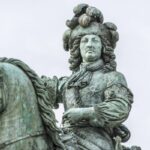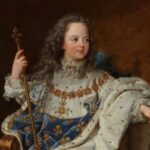We explain what a monarch is and how his role changed throughout history. Also, what monarchs exist today.

What is a monarch?
a monarch is the head of state of a monarchy that is, someone who holds the position of political leader of the State for life (for life) and dynastically (hereditarily), using noble or aristocratic titles such as king or queen, prince or princess, emperor or empress, grand duke or grand duchess (or her ancient equivalents: tsar or tsarina, pharaoh, khan, inca, caliph, shah, among many others).
In fact, the word “monarch” itself comes from the Greek monarchescomposed of bun (“unique”, or “one only”) and arkhés (“principle or power”).
Monarchs are always the head of a monarchical system, and therefore There are as many types of monarch as there are different forms of monarchy. Some of them assign them important roles in the leadership of the State, while in others they are considered more than anything representative figures, who play a symbolic role in patriotic or national discourses.
For much of history, monarchs played the role of autocratic rulers that is, absolute, either by exercising tyranny, or by having been installed on the throne as a reward for their political, religious and/or military exploits.
Many monarchs were considered, in their respective nations, as emissaries of divinity, imposed by God himself as his representative on Earth. That is why they were crowned by priests or spiritual leaders (like the Pope in Medieval Europe).
Unlike other political leaders, monarchs are not usually elected by popular vote, but chosen according to the line of succession (that is, the transmission of power according to blood relationship) or sometimes forcibly imposed after overthrowing another, since it is a lifelong position. However, to occupy the royal throne a noble origin was usually necessary.
There are, however, numerous cases of monarchs who abdicated the throne, that is, who renounce exercising their power, or even some who, currently, are elected through democratic mechanisms.
Monarchs today
At the beginning of the 21st century, there are numerous monarchs in Europe, Asia, Africa and Oceania. Some of them are:
- Elizabeth II of the United Kingdom (1926-), British monarch, sovereign of sixteen independent States that constitute the British Commonwealth of Nations: United Kingdom (England, Wales, Scotland and Northern Ireland), Canada, Australia, New Zealand, Jamaica, Barbados, Bahamas, Grenada, Papua New Guinea, Solomon Islands, Tuvalu, Saint Lucia, Saint Vincent and the Grenadines, Belize, Antigua and Barbuda, and Saint Kitts and Nevis.
- Philip VI of Spain (1968-), Spanish monarch, that is, current King of Spain, proclaimed in 2014 after the abdication of his father, Juan Carlos I.
- Hiro-no-miya Naruhito Shinno (1960-), Emperor of Japan, is the 126th monarch to occupy the Chrysanthemum Throne, following his father's abdication in 2019. His consort is Empress Masako Owada (1963-).
- Mohamed IV of Morocco (1963-), full name Sidi Mohammed ben (el-) Hasan ben Mohammed ben Yusef (el-) Alawi, is the current Moroccan king, whose accession to the throne occurred after the death of his father, Hasan II, in 1999. .
- Tamim bin Hamad Al Zani (1980-), sheikh and current emir of Qatar, belonging to the Al Thani dynasty. He ascended to the throne after his father, Hamad bin Khalifa Al Thani, abdicated the leadership of the Qatari state in 2013.
- Vaaletoa Sualavi II (1947-), Samoan head of state, a position designated as Either good or bad in Samoan. A member of the Taua'ana dynasty, he also holds the titles of Tui A'ana and Tama'aiga.
References
- “Monarch” on Wikipedia.
- “Monarchy” on Wikipedia.
- “Monarch” in the Language Dictionary of the Royal Spanish Academy.
- “Monarch” in the Online Spanish Etymological Dictionary (Chile).
- “Monarchy” in The Encyclopaedia Britannica.





